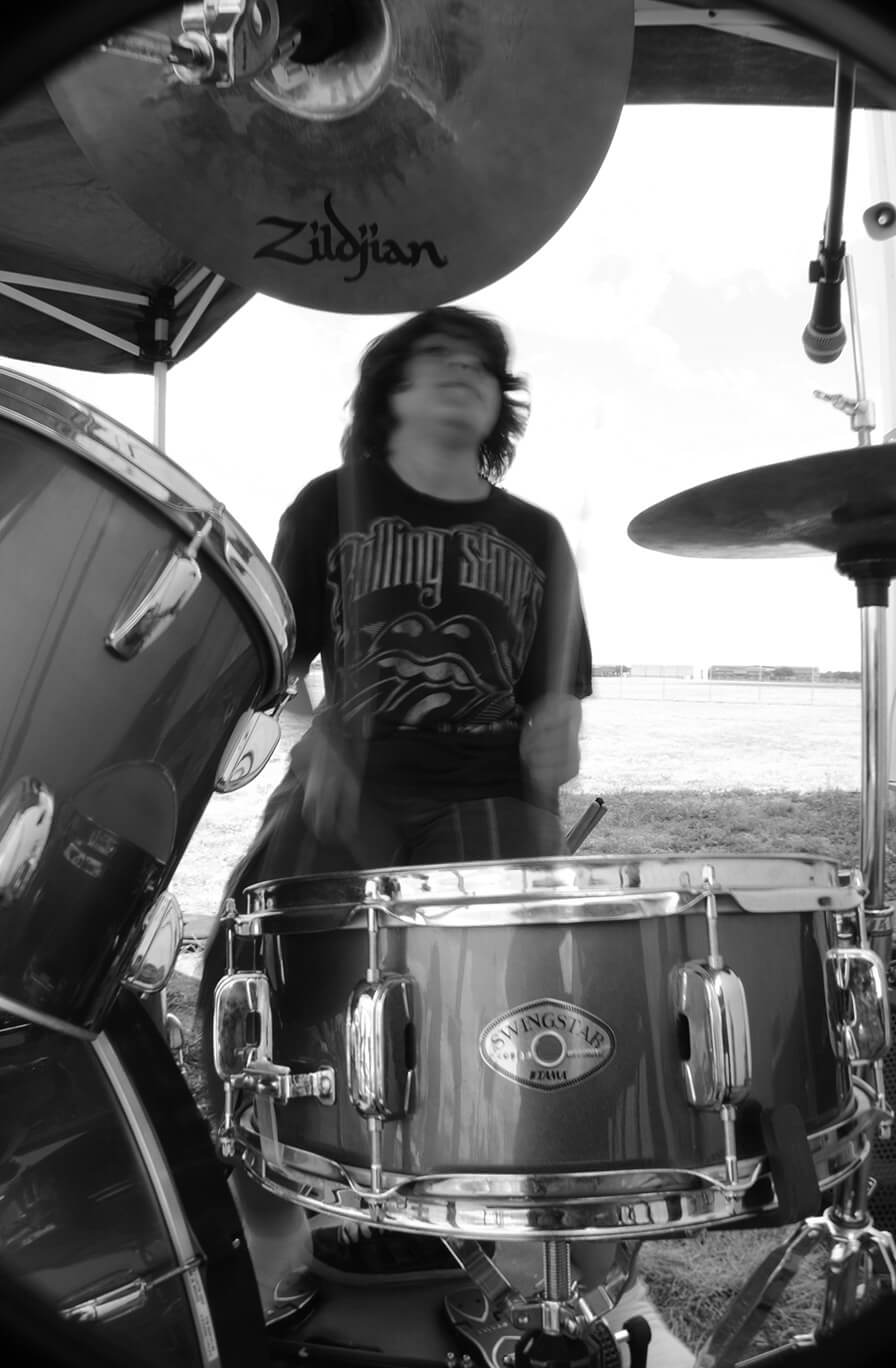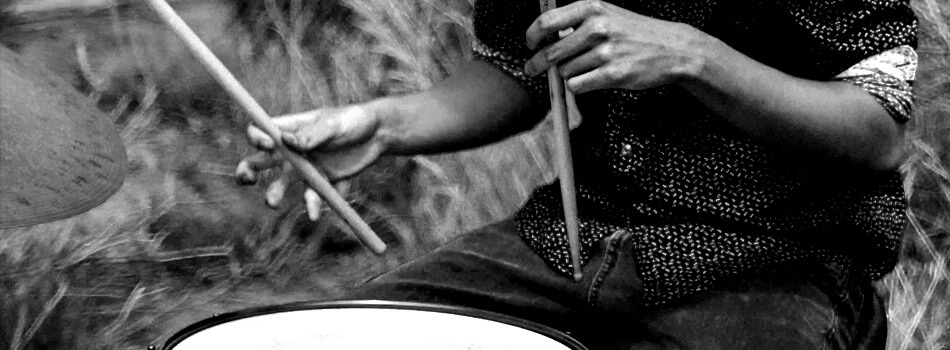Essential Drum Lessons for Kids
Introduction:
Most people will agree to the fact that drums are among some of the hardest instruments to play. This might be true, but that doesn’t mean that drums are reserved for adults. In fact, some of the most talented drummers have started at a very young age.
We’re here to discuss the topic of kids & drums in general, but we’re also going to mention drum lessons for kids in various aspects.
Are drum lessons necessary?
Drum lessons for kids aren’t exactly necessary, but they’re undeniably helpful. Most kids are happy simply due to the fact that they’re punching things, and having them “attend” drum lessons might be boring, but that’s not always the case.
Some kids are capable of grasping the basic mechanics of drums on their own, so it’s safe to say that drum lessons for kids aren’t exactly necessary for virtuosos.
On the other hand, there are children who have strong inclinations toward drumming but lack the talent.
Those kids will surely benefit from drum lessons, as they’ll be tutored through the first, hardest steps.
Since “kids as beginner drummers” is quite broad, let’s step back a little and break it down later on in the section “things you should consider” of this guide.
But first, let us dig in right into different essential drum lessons for different ages:

Table of Contents

Drum lessons for toddlers (>3 year old)
Some toddlers have learnt how to speak by the time they turned three while some have difficulties with simpler actions.
Now, there are no rules regarding the time when your kid should start with drumming lessons, but if your toddler is at least “average” in terms of basic “child” skills and happens to like drums for some reason, you should definitely go on with the flow.
As toddlers are usually easily amused by interactive things and easily bored and confused with talking, you should try visual drum lessons.
We will mentio drum lesson DVDs and drum song tutorials, so that might be helpful.
Lastly, you need to consider equipment. There are special “toddler drum sets” that are specifically made for the youngest drummers, like VTech’s KidiBeats Kids Drum Set.
Of course, it will be nearly impossible for toddlers to handle real drum sets, so this toy-like drum kit will work just fine.
As for the drum lessons for toddlers, you shouldn’t worry too much. Most of the time, your little drummer will just enjoy the time by just punching the toy drum set.
This is the perfect time for your young one to get introduced to drums, but the lessons themselves won’t be too useful for the time being.
The “Kick” exercise
First of all, toddlers don’t have to bother with rhythm from the very beginning. The purpose of the “kick” exercise is to activate the muscle memory in the toddler’s legs (as toddlers usually clap along music, the muscle memory in their hands are often more accentuated while their “leg memory” is neglected).
Play a really slow song that focuses primarily on “kicks”. A perfect example would be Foghat’s “Slow Ride”.
If you went through the “introduction” exercise with your toddler, it will be able to recognize the “kick” sound. If not, play it yourself instead, pointing out that this is the matter of the exercise.
Repeat the song for as long as it’s necessary, and your toddler will have mastered the basic “kick” exercise in no time.
Drum lessons for 3 Year Old Kids
In essence, 3-year old kids are just barely older than toddlers, but it’s safe to assume that these kids can handle drum kits and drum lessons more easily.
Furthermore, your kid will now be able to grasp the basic and most essential drum lessons, even if they have to be somewhat improvised and tampered.
The most basic lessons should be taught at this age, and they involve only the simplest techniques. On the other hand, you might want to make an effort in introducing the basic concept of drums as an instrument as well.
Now, let’s see what types of lessons should be taught.
First of all, you should begin by “naming” each strike on the drums (“kick” for the bass drum, “snare” for the snare stroke”, “hat” for hi-hat, and such).
Hit the corresponding drum piece as you name it until your kid understands, then let him (her) try. After a while, your kid will be able to play simple drum beats.
If this method doesn’t yield results, you could consult this video for guidance.
The “Kick-Snare” exercise
The kick-snare exercise is really just an extension of the basic “kick” exercise. In truth, this is a simple exercise that can be performed by toddlers, but it involves a bit of rhythm in the background.
The purpose of this exercise is to learn your kid how to connect “kicks” with snare hits.
This exercise involves a single kick hit, and a single snare hit in succession. It’s important to point out this to the child, and to go at a very slow pace. The only difference, however, is that this exercise should be taught without music in the background at the beginning.
The music might disorientate your kid if it goes out of rhythm. After the first steps have been cleared, you can include music, as long as it’s slow and easy.
The “Kick-Snare, Snare-Kick” pattern
Another variation of the “kick” exercise is the “kick-snare, snare-kick” pattern. Basically, this is a lesson that is supposed to train the nerves rather than muscles. Most kids are hyperactive, and following a simple drum pattern might appear easy, until it’s reversed.
This drum pattern involves the basic “kick-snare” pattern, followed by the reverse pattern, the “snare-kick”. Again, your kid will have a trouble focusing if there’s music in the background, so start off by simply playing and naming the corresponding drum parts.
Drum lessons for 4-5 year old kids
The 1 year gap between 4-year and 3-year old kids isn’t huge, but it’s still something. Kids can learn more advanced lessons at this age, or, at least, use a larger assortment of drum parts.
These “more advanced” drum lessons are still quite simple from a viewpoint of a beginner drummer, but they’re definitely “harder” than random drum strokes.
The name of the video that might be of help for you is “Your Very First Drum Lesson“, and you can hear Jared Falk explaining the first steps toward kid drumming.
There’s a simple, yet efficient explanation of counting, which will be of great help to your kid concerning the rhythm.
“Kick-Snare-Hat” pattern
Five-year old kids will easily master the previous lessons, so the “kick-snare-hat” pattern should do the trick. Additionally, you can improvise this pattern by breaking it down in any other order (“snare-hat-kick”, “Kick-Hat-Snare”, or such).
If the practice drum set has any sort of cymbals, feel free to add them to the pattern, as they’ll be of huge help.
The purpose of this exercise is to follow an extended pattern and to follow up with different variations of it. Beginner drummers might find this exercise as “easy”, but it’s extremely helpful to kids.
THINGS TO CONSIDER:
There are factors that you “can” and “can’t” influence, so, first of all, don’t be too hard on yourself. If your kid really wants to learn the basics of drumming, it’s up to you to choose the method of teaching and appropriate equipment, and that’s pretty much all there is to it.
Secondly, you shouldn’t “rush” your kid into it. The little ones know what’s best for them, so they stay away from things they perceive as “dull and boring”, and happily trod to items they see as “fun and enjoyable”.
Make a small test for your kid
Easily enough, you can test the “drum aptitude” of your kid. As a parent, you must have noticed that your child likes and dislikes certain things.
For instance, most kids simply adore flashy stuff (such as hanging night lights) while most kids hate veggies. Now, it would be pretty hard for you to see if your kid likes drums if there aren’t any drum sets lying about.
If you want to see if your kid has the potential to even like drums, you could always turn on a rock/pop show on YouTube or on TV.
On the other hand, you could even buy a mini drum set and see if there’s any reaction. Once you’ve done this (and the results were positive), you should consider all the other aspects we’ve named below:
The age of your kid is important when determining the type of drum lessons for kids
Simply put, the age of your kid is the first thing you’ll take into consideration when you’re about to determine which type of equipment and drum lessons it’s going to take. For instance, toddlers won’t be able to grasp the basics of music theory, so it might be better to take the “Show” rather than “Tell” approach. Pictures, animated videos, and such work like a charm.
On the other hand, those “older” kids (five year old kids, for example) might feel like they’ve outgrown “childish picture books and shows”, so a proper tutor would be a better solution.
Different methods of teaching drums
As we’ve already mentioned, there are different types of drum lessons for kids. It’s up to you as a parent to decide which one will be best for your kid:
• Drum lessons without drums
As a kid, you’ve probably used your pen to hit the surface of your table at school, and that’s precisely what drum lessons without drums are about. Your kid might get a better understanding of rhythm, and it might even be fun if you put a story behind it.
For example, you could casually start hitting any hard surface with your hands while telling a story, and the kid might like the beat.
As kids are like sponges, they’ll absorb everything around them, and they’ll memorize the event. If you succeed in making it fun and enjoyable, your kid might get into drumming in no time.
Speaking of drum lessons without drums, you might want to consider some online lessons to get a better idea of how your tutoring should look like.
Actually, there’s a YouTube channel called “drumming without drums” that is based on this technique in particular. There are over twenty useful videos, so check them out when you can.
• Drum lessons for kids DVD & VHS – drum tutorial songs
Drum tutorial songs are perfect for kids, as they usually include a handy drum tablature. Kids are usually quick when it comes to learning via pictures, and tablatures are just the sort of a thing they’d want when it comes to drum lessons for kids.
There are plenty of DVDs and VHS’s with drum tutorial songs that will greatly help your kids. Alternatively, YouTube is also a good source of information. As a good example of “drum tutorial songs”, you could try Hal Leonard’s “Absolute Beginners: Drums Book & DVD Edition. Hal is pretty famous and revered by the drumming community, and most of his work is decently affordable.
On the other hand, Dann Sherrill offers a complete guide on how to Learn & Master Drums, but it costs quite a lot. Even though the price is somewhat higher than your usual DVD rental, its efficiency is undeniable.
• Drum lessons instructor
If all the other techniques appear too overwhelming, you could always hire a drum lessons instructor, or a tutor. Most parents send their kids to music schools or hire private instructors that possess the necessary skills and knowledge as it’s easier. However, there are both good and bad things about this approach.
The first good thing is that your kid will have the help of the professional. People who know their stuff and earned their salt. If you’re not into drumming yourself, there’s only a handful of things you could teach.
Furthermore, you won’t have to worry about teaching your kid the wrong things. For instance, laymen drummers don’t know much about music theory.
About the bad things, the first thing that comes to mind is that your kid might not like the instructor. Kids often like or dislike people based on their tone of voice, and some professional instructors (while wanting to show their level of professionalism) appear strict.
Anyhow, it’s up to you to decide what is the best course of action.
Drum lessons for beginners & Drum lessons for toddlers – what’s the difference?
We’ve discussed different methods of drum teaching so far, but we’re about to see the difference between drum lessons for toddlers and drum lessons for beginners.
Now, most people refer to beginner drummers in the context of kids that are well above ten years old while toddlers are kids who are usually below three.
What’s the difference apart from that? Well, it’s obvious that “beginner drummers” are physically and mentally more capable than toddlers when it comes to learning and handling drums.
This leads us to the conclusion that different drum lessons and gear should be used when teaching.
At what age to start drum lessons?
The younger the child, the better are the chances of getting a proper head-start. Even though kids have all the time in the world, things like school, socialization, and chores cut their “free time” which can be used to grow as a drummer.
Simply put, toddlers and the youngest kids have more “free time” as they don’t go to school and their responsibilities are minimal.
On the other hand, their responsiveness is also sharper and they tend to be more hyperactive during these periods. This is the reason why the statement “the younger – the better” applies here marvelously.
CONCLUSION
Teaching kids virtually anything is beautiful, but hard. Now, teaching kids how to play drums takes “hard” onto a whole new level.
Drums are one of the hardest instruments to play, and the learning curve is quite long.
This is the reason why great drummers start to practice so early, and this is the reason why many online and private instructors advise it.
We’ve mentioned some of the most basic drum lessons for kids and methods of teaching, so it’s up to you to decide how your kid is going to learn. If one method doesn’t seem to be working, you could always try something else.
For example, if audio/video lessons appear boring to your kid, try adding a touch of interaction, or fix up a story.
Also be sure to choose a good drum set specially design for kids, you can choose from electronic drums to toddlers kits or a beginner set that will last a little longer.
Either way, if you want your kid to learn, it’s imperative that you keep the spirits up. The learning process has to be both educative and entertaining.

